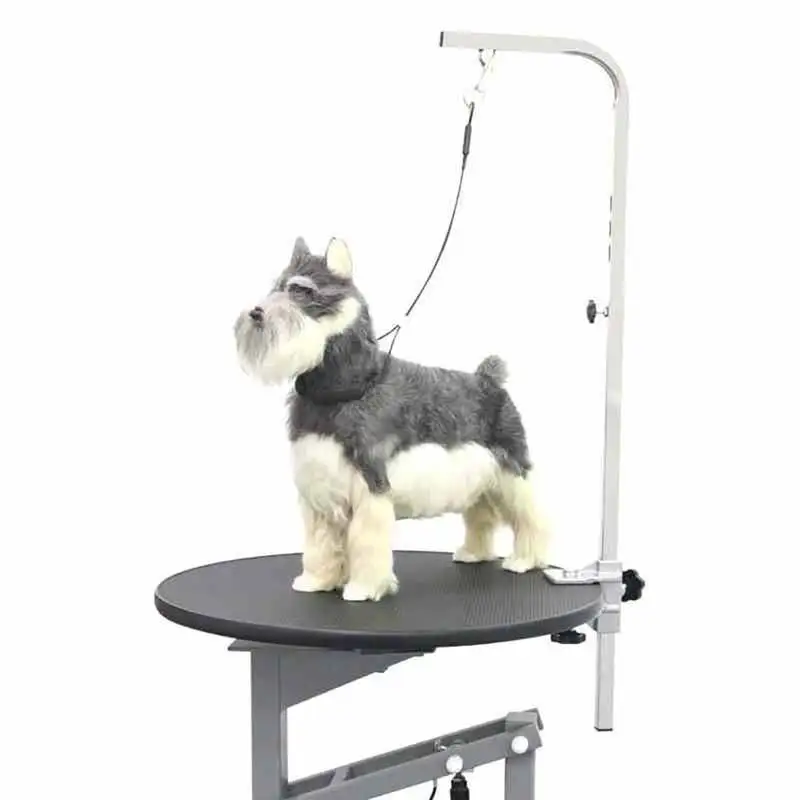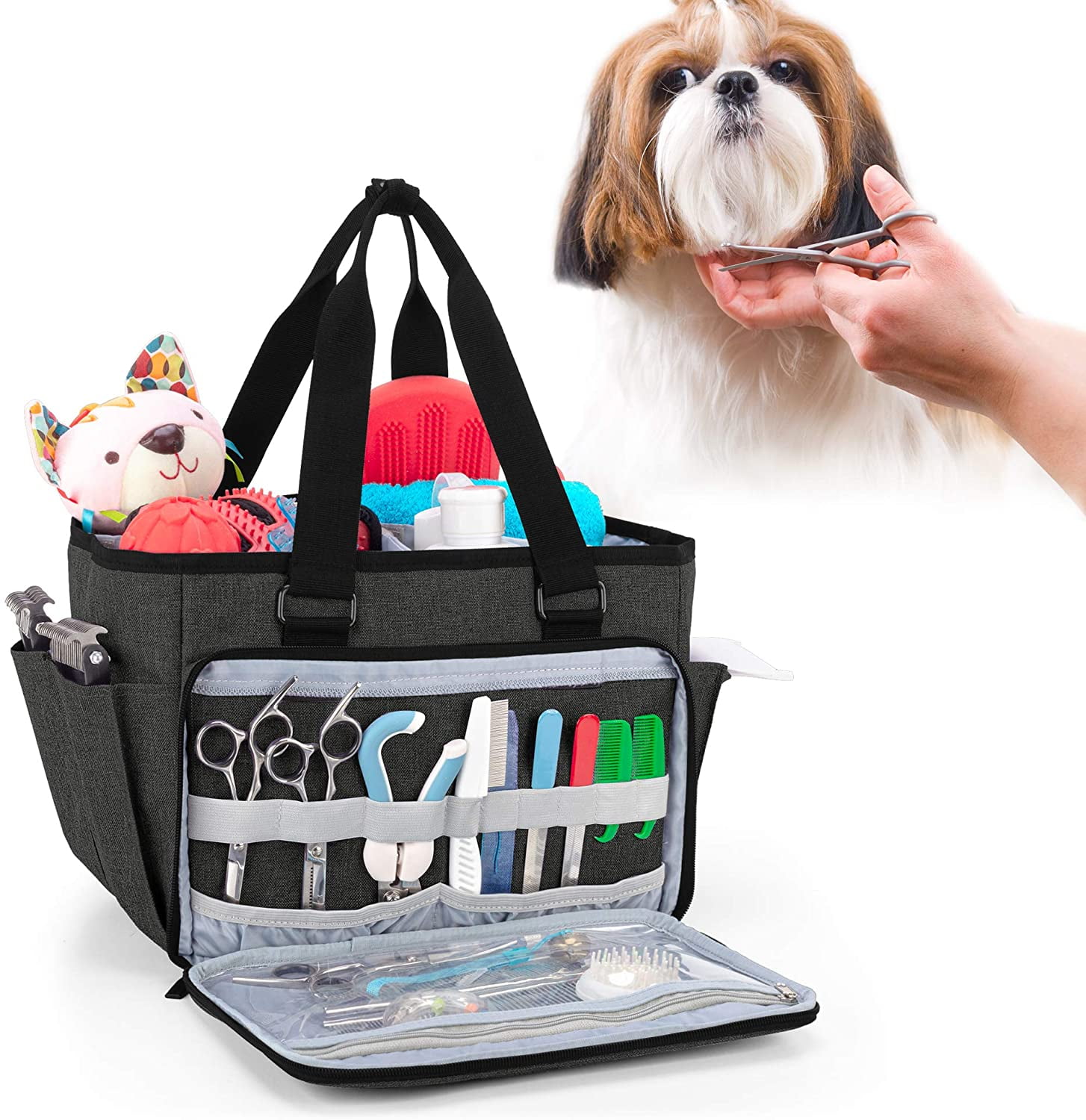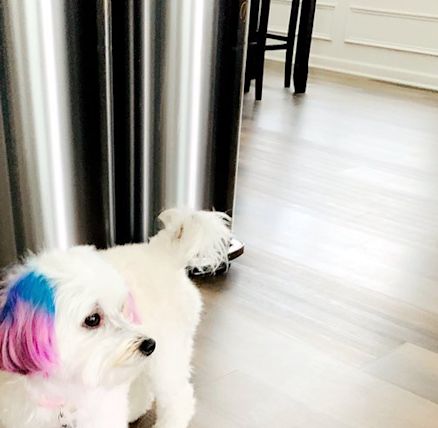A restraining device that fits in a door frame to keep a dog immobile and cooperative during
Table of Contents
Table of Contents
Are you tired of struggling to groom your furry friend? Restraint devices can help make the grooming process easier for both you and your dog. In this article, we’ll explore the benefits of restraining your dog for grooming and provide tips on how to use these tools effectively.
Pain Points of Grooming Unrestrained Dogs
Grooming can be a challenge for many pet owners, and restraining your dog may seem like an unnecessary step. However, grooming an unrestrained dog can be dangerous and stressful for both you and your furry friend.
Unrestrained dogs can move unexpectedly, making it difficult to properly groom certain areas. This can lead to accidental cuts or injuries, which can be painful and stressful for your pup. It can also cause anxiety and stress for you, as you struggle to keep your dog calm and still.
The Purpose of Restraint Devices
The main purpose of restraint devices is to keep your dog safe and immobile during grooming. When your dog is restrained, they are less likely to move unexpectedly, making grooming a safer and less stressful process for both of you.
Restraint devices can also help make grooming more efficient, as you can focus on specific areas without worrying about your dog’s movement. This can help you groom your dog more thoroughly and effectively.
Main Points to Keep in Mind When Using Restraint Devices
When using restraint devices, it’s important to keep a few things in mind. Firstly, ensure that you are using a device that is appropriate for your dog’s size and breed. Secondly, be gentle when using the device, as excessive force can cause injury or distress to your pup.
Finally, always monitor your dog’s behavior during grooming, and be prepared to stop if they show signs of discomfort or distress.
My Personal Experience with Restraint Devices
As a dog owner, I have found that restraint devices can make the grooming process much easier and less stressful for both me and my pup. The first time I used a restraint device, I was hesitant, as I didn’t want my dog to feel uncomfortable or distressed.
However, I quickly realized that restraint devices can help keep my dog calm and immobile during grooming, which makes the process much safer and more efficient. My dog is now used to being restrained, and I have found that it has made grooming a much more enjoyable experience for both of us.
Types of Restraint Devices
There are several types of restraint devices that you can use when grooming your dog. Some of the most common types include:
- Table restraints - These devices attach to a grooming table and can be used to keep your dog securely in place during grooming.
- Door frame restraints - These devices fit in a door frame and allow you to restrain your dog while standing.
- Bath restraints - These devices attach to the side of your bathtub and can be used to keep your dog immobile during baths.
Using Restraint Devices Safely
When using restraint devices, it’s essential to ensure that you are doing so safely. Always read the instructions carefully, and be sure to use the device in a way that is appropriate for your dog’s size and breed.
Additionally, never leave your dog unattended while using a restraint device, as this can be dangerous and stressful for your furry friend.
Final Thoughts
Restraint devices can be a valuable tool for dog owners, helping to make the grooming process safer, more efficient, and less stressful for both you and your four-legged friend. By using these devices safely and effectively, you can ensure that grooming is an enjoyable experience for everyone involved.
Question and Answer
Q: Are restraint devices cruel?
A: No, when used correctly, restraint devices are not cruel. In fact, they can help keep your dog safe and make the grooming process less stressful and more efficient for both you and your pup.
Q: Can restraint devices cause injury to my dog?
A: If used incorrectly, restraint devices can cause injury to your dog. That’s why it’s essential to read the instructions carefully and ensure that you are using a device that is appropriate for your dog’s size and breed.
Q: Are there any alternatives to restraint devices?
A: Yes, there are alternative methods for keeping your dog still during grooming. These include using treats or toys to distract your pup, or having a friend or family member hold your dog securely while you groom them.
Q: How can I tell if my dog is uncomfortable or distressed during grooming?
A: Signs that your dog may be uncomfortable or distressed during grooming can include whining, growling, or snapping, trying to pull away, or displaying other signs of anxiety or stress. If you notice any of these signs, it’s important to stop grooming and assess the situation.
Conclusion of Restraint Devices for Dog Grooming
Grooming your dog can be a fun and rewarding experience, but it can also be challenging, especially if your pup is uncooperative. By using restraint devices safely and effectively, you can make the grooming process safer and less stressful for both you and your furry friend. Whether you choose to use a table restraint, door frame restraint, or bath restraint, be sure to always keep your dog’s safety and comfort in mind.
Gallery
A Restraining Device That Fits In A Door Frame To Keep A Dog Immobile And Cooperative During

Photo Credit by: bing.com / dog nails visit
Nylon Table Bath Restraint Rope Pet Dog Grooming Collar Leash For Pet Noose Loop Lock Clip Rope

Photo Credit by: bing.com / grooming dog collar harness pet restraint sling table accessories leash cat loop bath rope nylon noose lock fasten gentle fixed
How To Restrain A Dog To Clip Its Nails

Photo Credit by: bing.com / restrain canine
Restraining A Dog In Standing - YouTube

Photo Credit by: bing.com / dog restraining standing
Dog Basic Restraints - YouTube

Photo Credit by: bing.com / restraints






